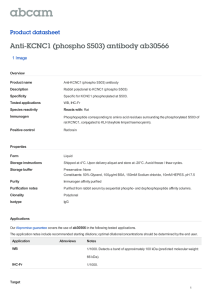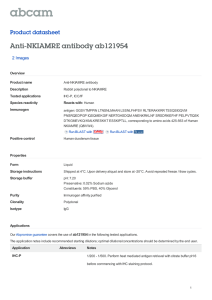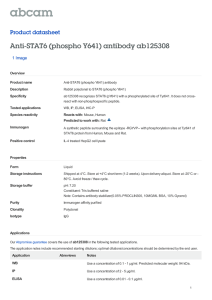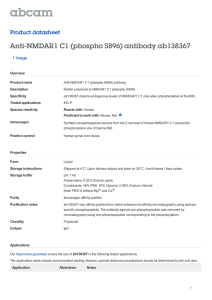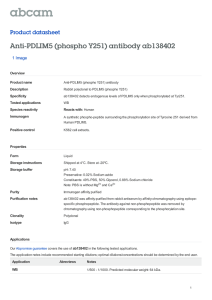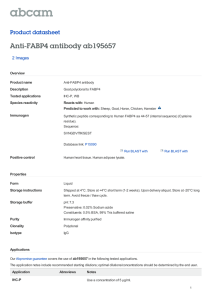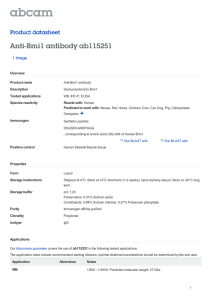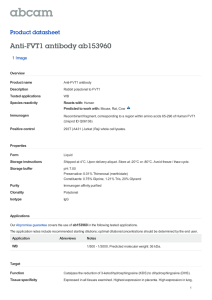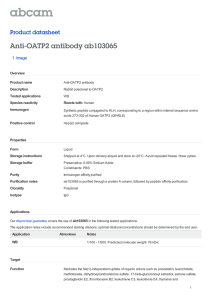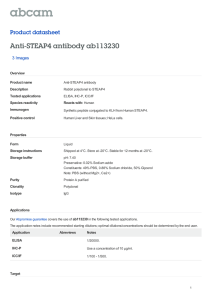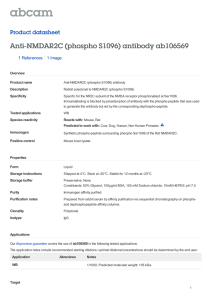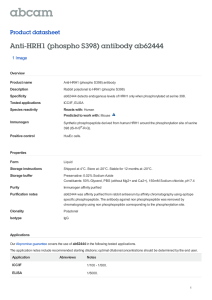Anti-PDCD4 (phospho S457) antibody ab118505 Product datasheet 1 Image
advertisement
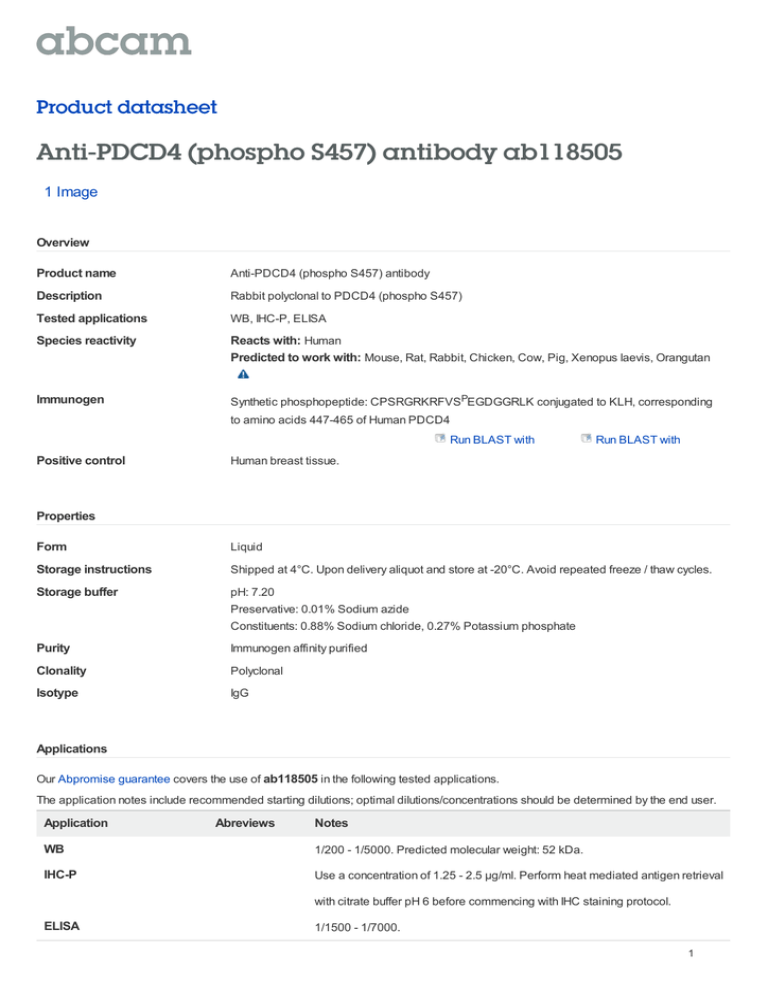
Product datasheet Anti-PDCD4 (phospho S457) antibody ab118505 1 Image Overview Product name Anti-PDCD4 (phospho S457) antibody Description Rabbit polyclonal to PDCD4 (phospho S457) Tested applications WB, IHC-P, ELISA Species reactivity Reacts with: Human Predicted to work with: Mouse, Rat, Rabbit, Chicken, Cow, Pig, Xenopus laevis, Orangutan Immunogen Synthetic phosphopeptide: CPSRGRKRFVSPEGDGGRLK conjugated to KLH, corresponding to amino acids 447-465 of Human PDCD4 Run BLAST with Positive control Run BLAST with Human breast tissue. Properties Form Liquid Storage instructions Shipped at 4°C. Upon delivery aliquot and store at -20°C. Avoid repeated freeze / thaw cycles. Storage buffer pH: 7.20 Preservative: 0.01% Sodium azide Constituents: 0.88% Sodium chloride, 0.27% Potassium phosphate Purity Immunogen affinity purified Clonality Polyclonal Isotype IgG Applications Our Abpromise guarantee covers the use of ab118505 in the following tested applications. The application notes include recommended starting dilutions; optimal dilutions/concentrations should be determined by the end user. Application Abreviews Notes WB 1/200 - 1/5000. Predicted molecular weight: 52 kDa. IHC-P Use a concentration of 1.25 - 2.5 µg/ml. Perform heat mediated antigen retrieval with citrate buffer pH 6 before commencing with IHC staining protocol. ELISA 1/1500 - 1/7000. 1 Target Function Inhibits translation initiation and cap-dependent translation. May excert its function by hindering the interaction between EIF4A1 and EIF4G. Inhibits the helicase activity of EIF4A. Modulates the activation of JUN kinase. Down-regulates the expression of MAP4K1, thus inhibiting events important in driving invasion, namely, MAPK85 activation and consequent JUN-dependent transcription. May play a role in apoptosis. Tumor suppressor. Inhibits tumor promoter-induced neoplastic transformation. Binds RNA. Tissue specificity Up-regulated in proliferative cells. Highly expressed in epithelial cells of the mammary gland. Reduced expression in lung cancer and colon carcinoma. Sequence similarities Belongs to the PDCD4 family. Contains 2 MI domains. Domain Binds EIF4A1 via both MI domains. Post-translational modifications Polyubiquitinated, leading to its proteasomal degradation. Rapidly degraded in response to mitogens. Phosphorylation of the phosphodegron promotes interaction with BTRC and proteasomal degradation. Cellular localization Nucleus. Cytoplasm. Shuttles between the nucleus and cytoplasm. Predominantly nuclear under normal growth conditions, and when phosphorylated at Ser-457. Exported from the nucleus in the absence of serum. Anti-PDCD4 (phospho S457) antibody images ab118505, at 2.5 µg/ml, staining PDCD4 in formalin-fixed, paraffin-embedded Human Breast tissue by Immunohistochemistry using a biotinylated goat anti-rabbit IgG secondary antibody, alkaline phosphatase-streptavidin and chromogen. Immunohistochemistry (Formalin/PFA-fixed paraffin-embedded sections) - Anti-PDCD4 antibody (ab118505) Please note: All products are "FOR RESEARCH USE ONLY AND ARE NOT INTENDED FOR DIAGNOSTIC OR THERAPEUTIC USE" Our Abpromise to you: Quality guaranteed and expert technical support Replacement or refund for products not performing as stated on the datasheet Valid for 12 months from date of delivery Response to your inquiry within 24 hours We provide support in Chinese, English, French, German, Japanese and Spanish Extensive multi-media technical resources to help you We investigate all quality concerns to ensure our products perform to the highest standards If the product does not perform as described on this datasheet, we will offer a refund or replacement. For full details of the Abpromise, please visit http://www.abcam.com/abpromise or contact our technical team. 2 Terms and conditions Guarantee only valid for products bought direct from Abcam or one of our authorized distributors 3
